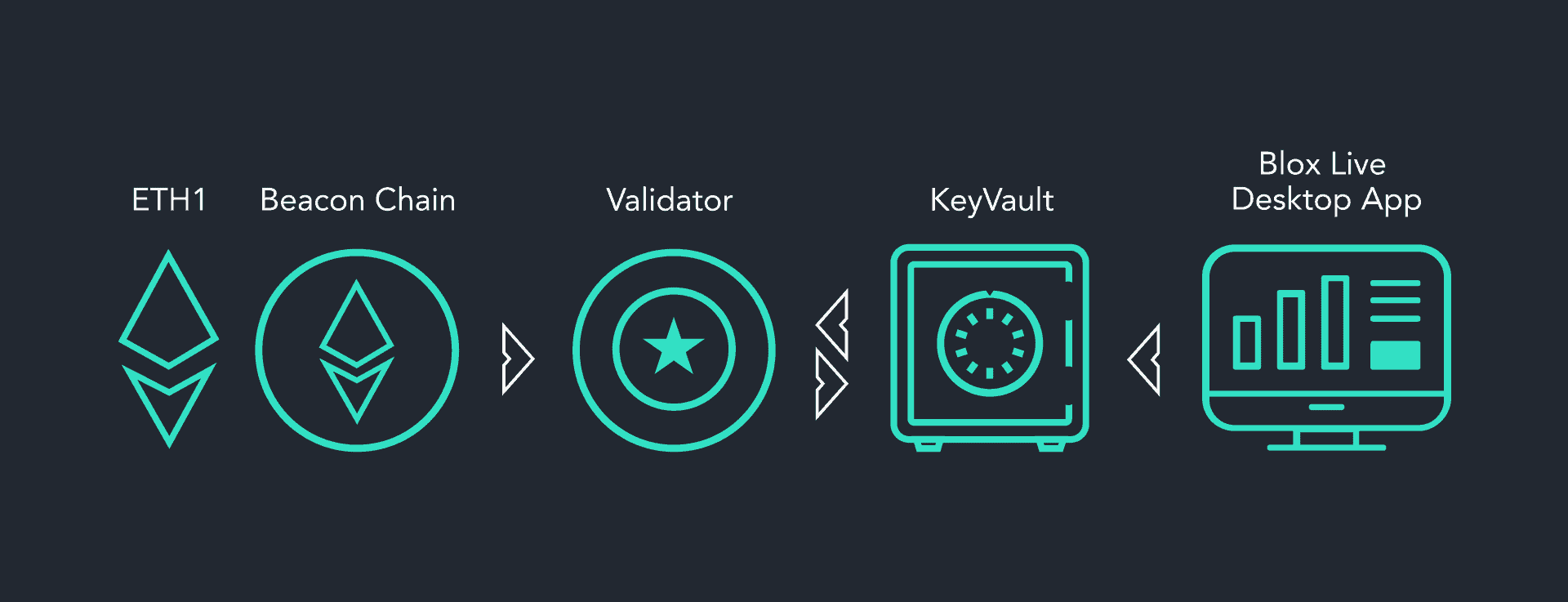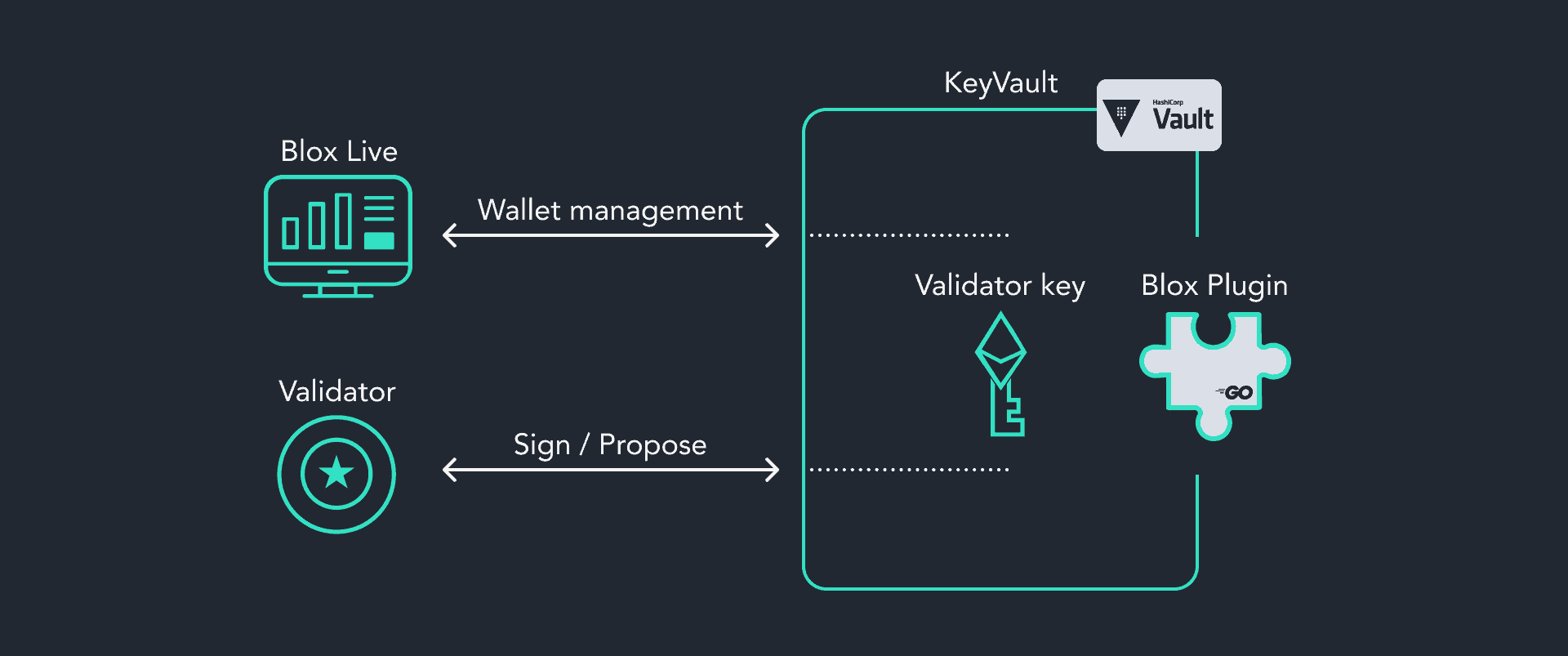Blox Staking is an open-source staking platform for Ethereum offering an easy way to run a validator and earn rewards while retaining complete custody over both private keys.
Step 1 – Download & Run Blox Live.
Step 2 – Using the Blox Live Wizard, install KeyVault on a personal server.
Step 3 – Using the Blox Live Wizard, set up a Validator.
Step 4 – Using the Blox Live Wizard, deposit 32 ETH to the Eth2 deposit contract.
Step 5 – Actively propose, attest and generate rewards on the Beacon Chain.
The setup process shouldn’t take more than a few minutes. Thereafter, it may take some time for your deposit to be activated on the Beacon Chain. You can check the status of your validator directly in Blox Live.
If you’d like to learn more, check out the extended installation flow.
How Is Blox Staking Designed and Built?

Blox is built a little differently than most staking services as it is an entirely non-custodial implementation. This means that each user retains custody over both validator key AND withdrawal key.
The platform consists of three main components:

-
Blox Live – Desktop App
The Desktop App (Blox Live) is the gateway to non-custodial staking on Eth2.
Blox Live is a locally run desktop app and is responsible for the following key features:
-
Blox KeyVault
Blox KeyVault is a remote signer powered by Hashicorp Vault. Blox developed a dedicated Vault plugin that supports BLS12-381 Eth2 signing keys.
KeyVault holds and manages your validator keys and is not held on Blox servers, rather your personalized version of KeyVault is kept completely segregated and installed on your cloud account of choice.
KeyVault has three main responsibilities:

-
Blox Infra
Validators on the Beacon Chain must be constantly connected to their nodes in order to perform assigned duties. Blox Infra is a cluster of validators, Eth2 and Eth1 nodes that ensure sustained communication to the KeyVault remote signers.
If you’re interested in learning more, check out the complete overview of Blox Staking and if you want a deeper dive, here is an overview of the tech.
For Developers: GitHub
For More: